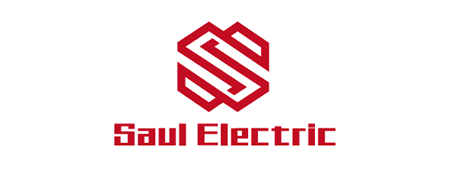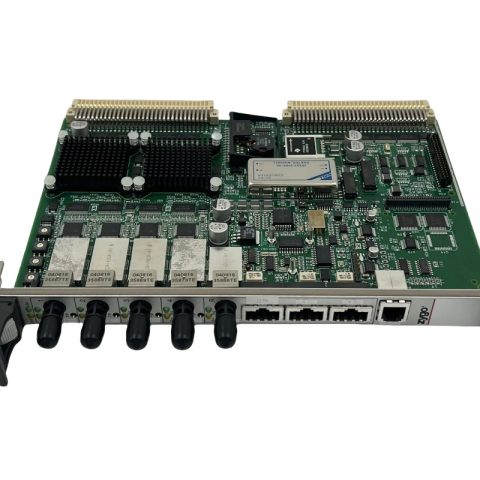ZYGO ZMI-2001 BD 8020-0210-01-J
ZYGO ZMI-2001 MEAS BD 8020-0210-01-J
(Single-Axis 6U VME Measurement Board)
1. Product Overview
The ZMI-2001 is a single-axis displacement measurement interferometer board from the Zygo ZMI 2000 series, model 8020-0210-01-J.
Designed in 6U VME format, this board is intended for high-precision displacement measurement, optical interferometry, and nanometer-level positioning systems. It can operate on VME or ISA buses and provides high-speed data transfer via the P2 interface.
.jpg)
2. Key Technical Specifications
| Parameter | Specification |
|---|---|
| Number of Axes | Single-axis (1 axis per board; system expandable up to 8 axes) |
| Form Factor | Standard 6U VME chassis size |
| Power Consumption | +5 V ± 5 % @ 3.5 A (for all ZMI-2001/2002/PC boards) +12 V ± 10 % @ 0.1 A (for ZMI PC only) |
| Resolution | λ/2048 ≈ 0.31 nm (2-Pass PMI) λ/4096 ≈ 0.15 nm (4-Pass PMI) |
| Measurement Range | ±10.6 m (2-Pass PMI) ±21.2 m (1-Pass LI) |
| Maximum Velocity | 2.1 m/s (2-Pass PMI) 4.2 m/s (1-Pass LI) |
| Interface Types | VME-bus (A16/A24 address, D16/D32 data) ISA-bus (16-bit) P2 bus (32-bit) |
| Data Rate | Up to 7.7 MHz via P2 interface (supports up to 16 axes) |
| Time/Position Data Format | Position: 36-bit 2’s complement Velocity: 32-bit 2’s complement Time: 32-bit 2’s complement (range 107.4 s, resolution 25 ns) |
| Optical Fiber Signals | Reference fiber + measurement fiber |
| Synchronization | External clock input/output (optional) |
| Additional Features | Error state monitoring (signal, PLL, DLL, loss, jitter, etc.) Supports up to 8-axis synchronization (1 axis per board) UL94 V-0 flammability rating |
3. Typical Applications
- Scientific Research: Optical interferometers, laser displacement metrology, nanometer positioning platforms
- Industrial Manufacturing: Precision machining, semiconductor lithography, optical component assembly
- Quality Inspection: High-accuracy displacement and form-error measurement, surface profile analysis
These applications demand sub-nanometer resolution, wide measurement range, and high-speed data acquisition — all of which are fully supported by the ZMI-2001.
4. Usage Notes
- Power Supply: Ensure stable +5 V ± 5 % supply with at least 3.5 A current.
- Thermal Management: The 6U VME board generates heat under full load; adequate ventilation in the chassis is recommended.
- Interface Compatibility:
- For ISA-bus systems, use an ISA-to-VME adapter.
- For VME systems, directly insert the board into the VME backplane.
- Calibration: Before first use, perform fiber connection and reference signal calibration according to Zygo’s guidelines to achieve optimal resolution.
Summary
The ZYGO ZMI-2001 MEAS BD 8020-0210-01-J is a single-axis 6U VME measurement board designed for ultra-precise displacement metrology. Featuring sub-nanometer resolution, wide measurement range, and a high-speed P2 data interface, it is widely used in both scientific research and industrial precision measurement applications.
.jpg)
ABB Allen-Bradley Alstom Bently Emerson Foxboro
GE MOOG Schneider Woodward HIMA Honeywell
ABB 5SHY series hot selling//large inventory//brand new//affordable price
First hand source, affordable price. Spot inventory!
•Shipping Port: Xiamen
•E-mail: sales7@saulplc.com
•Tel: + 86-15359273796(WhatsApp)
•Ship to you via Fedex/DHL/TNT/UPS/EMS
•Package: Original packing with cartons

More brands//More models//Hot selling inventory//Welcome to inquire
| ABB | GE Fanuc | Triconex | Bently |
| 3BHB004661R0101 | IC693CHS397 | DS200SLCCG1AEE | 8851-LC-MT |
| 3BHB000652R0101 | IC693MDL753 | DS200SLCCG1ACC | 8851-LC-MT |
| 3BHB000272R0101 | IC693ALG442 | DS200SIOCG1A | 8811-IO-DC-01 |
| 3BHE006805R0001 | IC693BEM321 | DS200SIOBH1ABA | 8810-HI-TX-01 |
| 3BHE004468R0021 | IC693MDL752 | DS200SHVMG1AFE | 8750-CA-NS |
| 3BHE010751R0101 | IC693MDL646 | DS200SHVMG1AED | 8709-CA-08 |
| 3BHE009017R0101 | IC693MDL741C | DS200SHVMG1ACC | 8611-FT-FU |
| HIEE300936R0101 | IC693ACC310 | DS200SHVIG1BGD | 8607ERL |
What Is a Distributed Control System (DCS)? A Complete Guide
A Distributed Control System (DCS) is a sophisticated automated control system that uses a network of interconnected controllers, sensors, and computers to manage complex industrial processes. Unlike centralized systems, a DCS distribates control functions across multiple modules, enhancing reliability and performance. It is essential in large continuous-process industries such as oil refineries, power generation plants, chemical manufacturing facilities, and paper mills—where high precision, operational safety, and scalability are critical.
How Does a Distributed Control System Work?
A DCS integrates several key components that work in unison to monitor and control industrial operations in real time. Here’s a breakdown of its core elements:
1️⃣ Controllers (The “Brain”)
Controllers process input data from sensors using predefined logic and algorithms. They send output commands to actuators to maintain process variables within desired limits, ensuring stable and efficient operation.
2️⃣ Sensors (The “Eyes and Ears”)
Sensors measure vital process parameters—including temperature, pressure, flow rate, and level—and provide continuous real-time data to the controllers.
3️⃣ Actuators (The “Muscles”)
Actuators carry out physical adjustments based on commands from the controllers. Common actions include opening or closing valves, starting or stopping motors, and regulating equipment.
4️⃣ Operator Stations (HMI – Human-Machine Interface)
These stations provide a graphical user interface (GUI) that allows operators to visualize the entire process, adjust setpoints, respond to alarms, and optimize performance.
5️⃣ Communication Network (The “Nervous System”)
A high-speed data network connects all components of the DCS, enabling seamless communication and coordination across different areas of a facility, even over large distances.
Key Advantages of Using a Distributed Control System
- Decentralized Architecture: By distributing control tasks, a DCS minimizes the impact of a single point of failure, increasing system resilience.
- Scalability and Flexibility: It allows easy expansion or modification of control loops and processes without disrupting existing operations.
- High Availability and Redundancy: Built-in redundancy in controllers, networks, and power supplies ensures uninterrupted operation, essential for critical processes.
- Enhanced Process Efficiency: Optimizes control loops, reduces energy consumption, improves product quality, and decreases operational waste.
- Integrated Data Management: Provides real-time analytics, historical trending, and reporting capabilities for better decision-making.
DCS vs. PLC vs. SCADA: What’s the Difference?
While DCS, PLC (Programmable Logic Controller), and SCADA (Supervisory Control and Data Acquisition) systems are all used in industrial automation, they serve different purposes:
- A DCS is ideal for complex processes requiring high reliability and coordinated control over a large area.
- A PLC is typically used for discrete control tasks such as assembly lines or machinery.
- SCADA focuses on supervisory-level monitoring and data gathering across geographically dispersed assets.
In many modern installations, DCS and SCADA functionalities are integrated to leverage the strengths of both systems.
Applications of Distributed Control Systems
DCS technology is widely applied in industries such as:
- Oil & Gas Refining
- Power Generation
- Chemical and Pharmaceutical Manufacturing
- Water and Wastewater Treatment
- Food and Beverage Processing
Conclusion
A Distributed Control System (DCS) offers a robust, scalable, and efficient solution for managing complex industrial processes. Its distributed nature not only enhances reliability and safety but also supports continuous operational improvement through integrated monitoring and control. Industries relying on precision, safety, and uptime continue to adopt and evolve DCS technology for smarter automation.
Optimization Notes:
- ✅ Target keywords included: Distributed Control System, DCS, industrial automation, process control, sensors and actuators, HMI, SCADA vs. DCS.
- ✅ Structured with clear headings and bullet points for readability.
- ✅ Content is comprehensive and answers likely user queries.
- ✅ Includes related terms like PLC and SCADA for context and SEO relevance.





1-480x480.jpg)
There are no reviews yet.